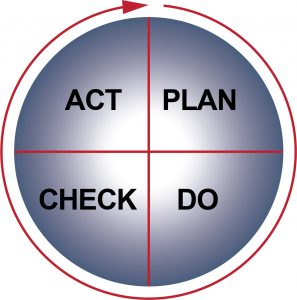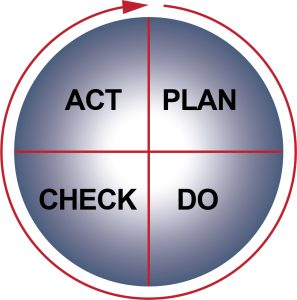Ergonomics Is Continuous Improvement
03/22/2017

Occasionally, my colleagues and I will take a step back from the day-to-day and have a more philosophical discussion about the field of ergonomics. Recently, the question was raised, “In the Plan-Do-Check-Act continuous improvement cycle, which step is the most important?” This sparked some  interesting debate. Here are the arguments we came up with for each step:
interesting debate. Here are the arguments we came up with for each step:
- Plan – This is the foundation for the entire process. If you do not have a strategic plan with goals and steps in place, how will you know what you’re working toward? This step ensures that everyone involved is aligned, knows their responsibilities, and is headed in the right direction at the start. This is probably the most commonly skipped step and, unfortunately, if it is ignored, your process may fail.
- Do – This is the part of the process in which things get done, and it’s certainly the most visible step. One of the hurdles organizations often face is getting started. This is especially true in larger, very bureaucratic organizations. The argument for “Do” being the most important step is that, if it is skipped, nothing happens and there is no process to begin with.
- Check – Checking confirms that you’re on target to do what you said you would do. Regular check-ins confirm that everyone is in sync and progressing toward the end goal. When things are not on track, it’s a good time to readjust resources and timelines as needed. Without this step, there is no way to know if you’re on track. The process can still function but, at the end of the year, you may find that you haven’t achieved your goal, and omitting the Check step may be the reason.
- Act – During this part of the process, you reflect on what went well and what could have gone better. It triggers the continuous improvement. This step is critical for standardizing the parts of the process that are working and tweaking the parts of the process that need more attention. If this isn’t done, you’re not running a “process,” just a “program”—something with a start and, likely soon, a finish.
In the end, all of the steps are important, but some people may gravitate to one step more than another because it aligns better with their strengths and interests.
For more information about the PDCA continuous improvement process, check out Humantech’s position statement Managing Ergonomics as a Continuous Improvement Process.






